 Dover (NH) can be an ideal location for off-the-beaten-path ghost hunting. Sometimes, Dover’s ghosts are overshadowed by the spirits of nearby Portsmouth.
Dover (NH) can be an ideal location for off-the-beaten-path ghost hunting. Sometimes, Dover’s ghosts are overshadowed by the spirits of nearby Portsmouth.
One of Dover’s earliest ghosts provides great historical insights as well as some spectacular hauntings.
Richard ‘Salt Eye’ Storr haunts near downtown Dover, and perhaps along the water’s edge, too. He manifests as a floating ball of light — a glowing orb — up to a foot across, and between three and eight feet above the ground.
His Storr family history is a bit murky. It appears that Augustine Storr (or Storre) came from Lincolnshire, England with his sons William and Richard (or Robert), in 1636 and lived in Exeter, NH for some years.
RICHARD AND WILLIAM – A STUDY IN CONTRASTS
Richard — the much younger son — seems to have been the ‘black sheep’ of the family, and left home early. (The origin of his nickname — ‘Salt Eye’ — is unknown, but assumed to relate to his career at sea.) Richard Storr was very different from his Puritanical church-going brother William, but both of them moved to Dover.
William’s choice was odd because he was an avid fan of Puritanism. One of his prized possessions was a copy of a eulogy for the Puritan Rev. Hildersam of Leicester, England. However, in 1641, Dover — the town the brothers moved to — was named after Robert Dover, who’d resisted Puritanism.
Was that an early bone of contention between the brothers and their chosen home? Was that behind ghost stories related to the Storrs?
It’s difficult to be certain.
‘SALT EYE’ AND THE SEA
According to legend, young Richard Storr left home around age 12 aboard a ship where he was a ‘powder monkey’ or member of a gun crew.
By the time he was in his early 20s, he was Captain Richard ‘Salt Eye’ Storr, and master of his own schooner. However, by all accounts he was a generous captain. His crew liked and admired him.
In fact, he was one of the earliest known Colonial captains with a schooner; that style of ship didn’t become popular in America until around the Revolution.
But, this was typical of Captain Storr. He was forward-thinking and independent. Schooners required a much smaller crew than other ships of his day. That may be why he chose it. He seemed to prefer a sense of privacy.
By 1670, ‘Old Salt Eye’ had retired from the sea. He built a sturdy log home overlooking the water, near Dover Point where Back Road meets Middle Road. That was his only known home, after his retirement.
THE COCHECO MASSACRE
When the center of Dover town moved from Dover Point further inland to ‘Cocheco’, where Major Richard Waldron build a sawmill and gristmill, Salt Eye refused to budge from his home.
Around this time, his brother William started spelling his surname name ‘Storer’, perhaps to differentiate from his eccentric brother. (Their father, Augustine, had died years earlier in Wells, Maine.)
Waldron secured favor with the British government by inviting Native Americans to a celebration. He told them that he was staging a ‘sham’ Indian war against his own soldiers, as a display for visiting officials. About 400 members of the Abenaki Nation showed up, and were promptly put in chains. Half escaped or — as the Waldron told the story — were set free. Some of the captured Indians were executed. About 200 were sent to Boston and sold as slaves in ‘foreign parts’.
Waldron was rewarded by being named Chief Justice for New Hampshire.
Salt Eye Storr was almost put in the chains himself for walking brazenly through town in Indian garb, protesting Waldron’s duplicity. But, Salt Eye avoided charges and the matter seems to have been forgotten, except in a few historical records.
ABENAKI REVENGE AND SALT EYE’S ROLE IN HISTORY
Some years later, the Abenaki had their revenge. Before dawn on June 28th, 1689, the Indians attacked Cocheco village. Waldron was killed with his own sword. Several houses were burned, and about a quarter of the colonists were killed.
Old Salt Eye lived far from the scene of the Cocheco Massacre, as it was later called. He didn’t know what had happened until he arrived in town the next day, to pick up supplies. Because of his years as a sea captain, he had rudimentary medical skills. So, he went from house to house in Cocheco, treating the wounded.
He stayed for several days, and perhaps weeks.
When he’d done all that he could, he returned to his isolated cabin where — according to local records — he lived for the rest of his days.
Today, no one knows where Richard ‘Salt Eye’ Storr’s grave is. He might have been buried near his cabin. More likely, he was buried in Dover Burial Ground, at Dover Point Road and Royer Lane. [map]
THE GHOST OF SALT EYE STORR
According to legend, Richard ‘Salt Eye’ Storr’s ghost still visits Cocheco village — today, the downtown area of Dover — to be sure that the villagers remains safe.
Watch for his glowing orb on warm, foggy nights, especially around the anniversary of the Massacre, at the end of June.
He’s most often spotted near the intersection of Central Ave. and Washington Street, in the vicinity of the historic marker and has also been seen near the Post Office.
Others report him closer to the water’s edge.
References:
- Sketch of Dover, Samuel C. Stevens, 1833. Dover Public Library, Dover, NH.
- Descendants of William Storer of Dover, New Hampshire. (Some family notes; does not mention Richard, aka ‘Salt Eye’.) [2016 update: That link isn’t working. I’m leaving the link here anyway, in case the site returns.]
- Historical memoranda concerning persons & places in old Dover, N.H., John Scales, 1900. UNH Library, Mary P. Thompson Library.
- Old Cocheco Tales, Richard Austin, 1865. Private collection.
- A narrative of the captivity of Mrs. Johnson : containing an account of her sufferings, during four years, with the Indians and French, Susanna Willard Johnson Hastings. (Ref. Abnaki Indians)
- A Very Grave Matter (Ref. Dover Burial Ground)
- Storr, Storre, Storer family records at FamilySearch.org.
Related reports:
- X-Zone Radio – Raven Duclos’ insights into the ghost of Richard Storr, “A trained medium, Duclos says that Storr is trying to communicate with Dover residents because his death has not yet been validated and his story remains untold.” (Reprint of Jim Haddadin’s article in Foster’s Daily Democrat newspaper.)
This article (originally at HollowHill.com) was the first to report this ghost story. Though I’ve listed historical records supporting it, I don’t claim it’s a “real ghost.”


 Parapsychology Degrees – or a degree in Paranormal Studies – can open the door to many ghost-hunting opportunities.
Parapsychology Degrees – or a degree in Paranormal Studies – can open the door to many ghost-hunting opportunities.
 One of the most famous is the Green Lady of Skipness Castle, by Loch Fyne. She has protected her home and the family in it for centuries. Several times, she created a supernatural confusion among enemies who’d planned to attack the castle. After they left Skipness, their wits returned, but as they marched back towards the Castle, they became confused again.
One of the most famous is the Green Lady of Skipness Castle, by Loch Fyne. She has protected her home and the family in it for centuries. Several times, she created a supernatural confusion among enemies who’d planned to attack the castle. After they left Skipness, their wits returned, but as they marched back towards the Castle, they became confused again.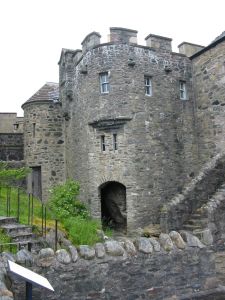
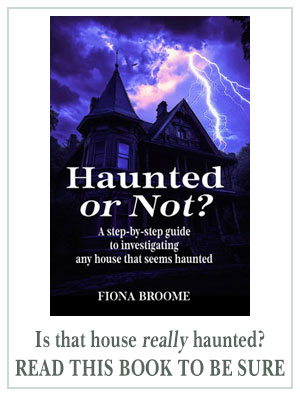
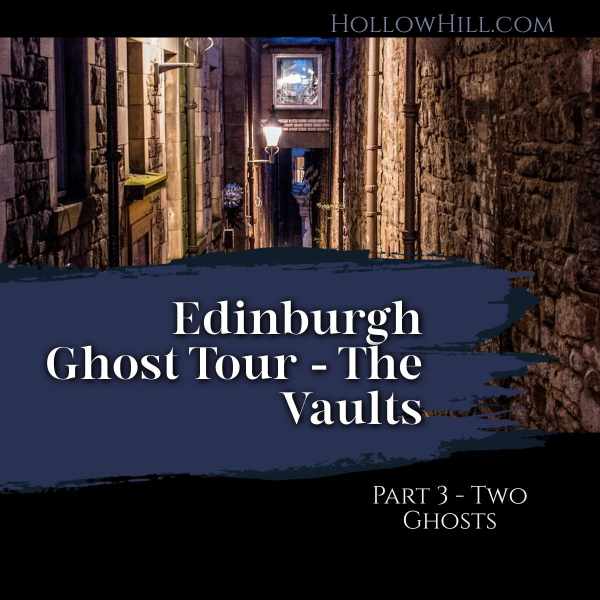
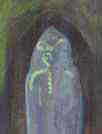 I sensed a ghost who was there to be a ghost. In other words, this person knew that he was dead, knew he was a ghost, and was making the most of it. It’s as if he was dedicated to being a ghost. I could “see” someone’s outline with a tricorn-type brimmed hat and rather wide shoulders, but otherwise draped in sparkling sheet-like material. It seemed tacky and cliched, to me.
I sensed a ghost who was there to be a ghost. In other words, this person knew that he was dead, knew he was a ghost, and was making the most of it. It’s as if he was dedicated to being a ghost. I could “see” someone’s outline with a tricorn-type brimmed hat and rather wide shoulders, but otherwise draped in sparkling sheet-like material. It seemed tacky and cliched, to me.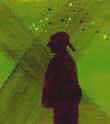 Soon, I could almost see him as he must have looked in life: Like Stanley Holloway (but shorter), from My Fair Lady, including the leather apron, sooty face, and a funny hat with a large brim that extended slightly down his back. He had a Stanley-Holloway type nose, too.
Soon, I could almost see him as he must have looked in life: Like Stanley Holloway (but shorter), from My Fair Lady, including the leather apron, sooty face, and a funny hat with a large brim that extended slightly down his back. He had a Stanley-Holloway type nose, too.
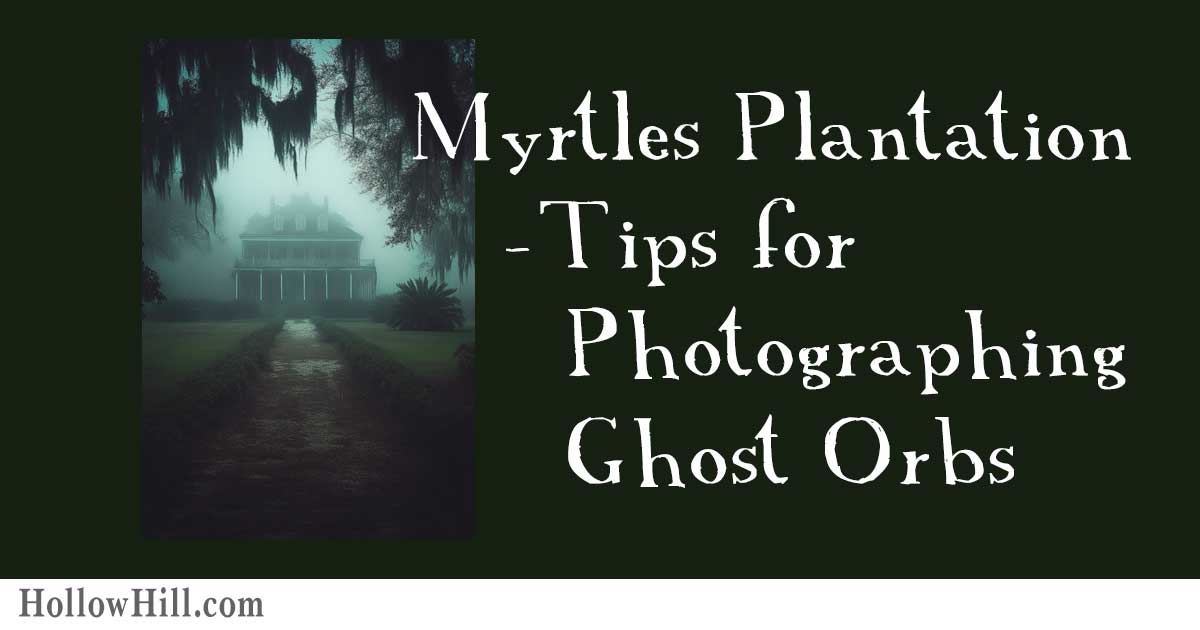
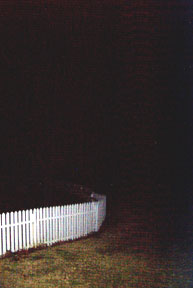 The photo, at left (dark scene with white picket fence), was taken at the back of The Myrtles Plantation, near the marshy land and pond.
The photo, at left (dark scene with white picket fence), was taken at the back of The Myrtles Plantation, near the marshy land and pond.
 There is no sound equipment anywhere in that wing, which could account for what we heard later that night.
There is no sound equipment anywhere in that wing, which could account for what we heard later that night.